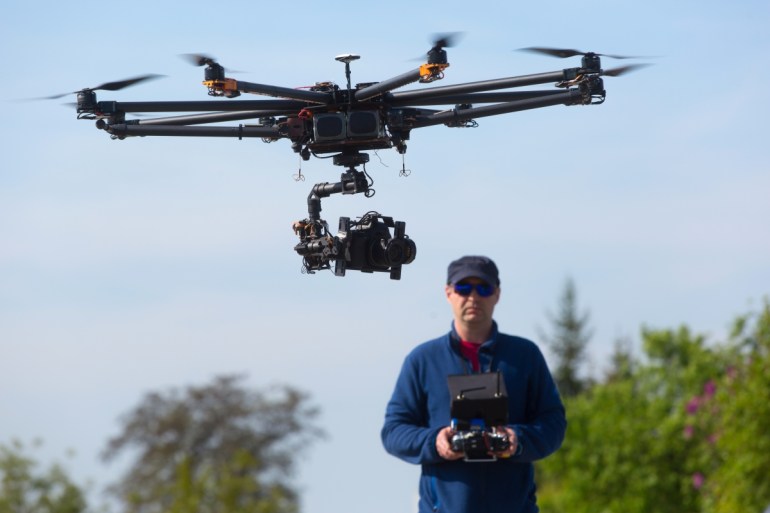Over the next five years, more than 100,000 new drone pilots will be needed, and drone sales are also expected to rise from $ 8.5 billion in 2016 to $ 12 billion in 2021. That is why in this report we review experiences. And the skills needed by a pilot.
The need for drone operators is now greater than at any time in the United States, as they are being used in the industry, film, agriculture, photography, real estate, insurance, construction, energy and public safety sectors.
Still images and videos taken with a drone have become commonplace in real estate listings. After damage or disaster strikes, a drone belonging to an insurance company can assess the damage and take close-up photos of the building.
Types of a pilot license
The US Federal Aviation Administration (FAA) has three classifications of aircraft operators: hobbyist aircraft that are used for recreational purposes, commercial aircraft that are used for commercial purposes and require a commercial license to operate, and government drones, which are drones that are launched to a destination. Government agencies such as the army, police and fire departments
Hobbyists should do the following:
If the drone weighs more than 250 grams, the owner of the aircraft must register the aircraft on the US Federal Aviation Administration's (FAADroneZone) website.
Once on the website, you must register for an account, provide personal information, provide some details about your drone, and pay the five dollar plane registration fee.
Fly the drone in line of sight, this means that the operator must be able to see the drone at all times.
When you receive your unique drone registration number via email, you must put this number on your drone, eg you can write it with a permanent mark.
Types of drones
- The most common types of drones are multi-propeller aircraft, and the most common is also the quadruple plane, which contains 4 propellers that maintain the balance of the vehicle and allow it to fly, and the more revolutions the drone has, the less time it can stay high, the quadcopter can Stay in the air for about half an hour.
- Small drones - 50 to 200 cm in length, and a great entry point for hobbyists and children, popular options in this category include the DJI Mavic Pro.
- Microdrones - 2.5 x 10 cm, these aircraft carry accurate cameras and are used by both amateurs and the military. For example, the British Army used the Black Hornet, a small drone to explore Afghanistan, and it can stay in the air for up to 25 minutes and have a range of up to one mile.
- Tactical drones, such as Raven, are used by the US military, measuring about 140 cm and weighing 1900 kg. These drones usually include infrared cameras and provide soldiers with accurate pictures even in the evening.
- Reconnaissance drones - also called medium-altitude long-range drones - are commonly used by militaries. For example, the Heron aircraft, designed by Israel Aerospace Industries, is being used by the United States, Canada, Turkey, India, Morocco and Australia.
She is 16 inches (487 cm) long and weighed about 2,200 pounds (about 1 ton). It can cruise at an altitude of 35,000 feet (10 km), and can stay in the air for up to 52 hours. - For those who make the best drones, opinions are unanimous on the Chinese company DJI, where DJI's camera stabilization systems are at the forefront of the industry, allowing the user to take great photos and videos.
Steps to becoming a pilot
Get a tracking number by creating an integrated Pilot Certification and Classification Application (IACRA) profile, before registering for a flight test, then studying for a flight test, and there are 696 FAA-accredited test centers across the United States.
Many private schools offer drone training, and they can provide you with all the drone regulations, and the Federal Aviation Administration provides a free study guide that contains everything you need to pass the test, and the test costs $ 160.
Once the study is completed, make an appointment with a test center, and make sure to bring a photo ID card issued by a government agency for the test. Exam topics include:
Regulations in place regarding small drone system classification privileges, restrictions and flight operation, airspace classifications, operational requirements, and flight restrictions affecting small drone operations.
In addition to aviation weather resources, weather effects on small drones, loading and performance of small drones, emergency procedures, wireless communications, airport operations, maintenance procedures and initial inspections.
Upon passing the test, sign the practice license application electronically and submit it for processing. Once the TSA security background check has been completed, a confirmation email will be sent to you, and a permanent remote pilot certificate will be mailed to you once your application has been checked.
It usually takes 6 to 8 weeks to receive your license, however for those who need it most urgently, a provisional license can be issued in approximately ten days.

